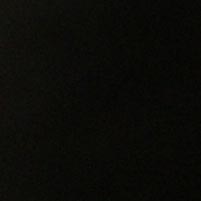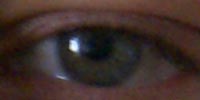Sony A100 Review
Review Date: September 18th 2006
Author: Gavin Stoker
Leave a comment about this Review
|
Image Quality
All of the sample images in this review were taken using the 10M Fine mode, which gives an average image size of around 2.5Mb - 3Mb.
Noise
There are 7 ISO settings available on the Sony A100 which you can select at any time if the camera is in the one of the creative shootings mode. Here are some 100% crops which show the noise levels for each ISO setting:
ISO 80 (100% crop) |
ISO 100 (100% crop) |
 |
 |
ISO 200 (100% crop) |
ISO Hi200 (100% crop) |
 |
 |
ISO 400 (100% crop) |
ISO 800 (100% crop) |
 |
 |
ISO 1600 (100% crop) |
|
 |
|
There is virtually no discernible noise at the slowest settings of ISO 80, 100 and 200. There's some noise at ISO 400, but it's still a usable speed. At ISO 800 image quality has deterioated a lot, and ISO 1600 is very nosiy indeed.
Sharpening
Here are two 100% crops which have been Saved as Web - Quality 50 in Photoshop. The right-hand image has had some sharpening applied in Photoshop. The out-of-the camera images are slightly soft at the default sharpening setting and benefit from some further sharpening in a program like Adobe Photoshop, or you can change the in-camera sharpening level.
Original
(100% Crop) |
Sharpened (100% Crop) |
 |
 |
 |
 |
Chromatic Aberrations
The Sony A100 dealt extremely well with chromatic aberrations during the review, with only very limited purple fringing present around the edges of objects in certain high-contrast situations.
| Example
1 (100% Crop) |
Example
2 (100% Crop) |
 |
 |
Macro
The Sony A100 offers a Macro scene mode, but as the A100 is a digital SLR it is the lens that determines how close you can get to the subject, not the camera body. The first image shows how close you can get to the subject (in this case a compact flash card). The second image is a 100% crop.
| Macro Shot |
Macro Shot (100% Crop) |
Flash
The flash settings on the Sony A100 are Auto, Fill-flash, Red-Eye Reduction, Rear flash sync and Off. These shots of a white coloured wall were taken at a distance of 1.5m.
| Flash Off - Wide Angle (27mm) |
Auto Flash - Wide Angle (27mm) |
 |
 |
| Flash Off - Telephoto (105mm) |
Auto Flash - Telephoto (105mm) |
 |
 |
And here are some self-portraits.
| Flash Off |
Flash Off (100% Crop) |
 |
 |
| Flash - Red-Eye Reduction |
Flash - Red-Eye Reduction (100% Crop) |
 |
 |
Night Shot
The Sony A100's maximum shutter speed is 30 seconds, plus there's a Bulb mode for even longer exposure times, which is great news if you're seriously interested in night photography. The shot below was taken using a shutter speed of 1/6th second at f/5.6 at ISO 400. I've included a 100% crop of the image to show what the quality is like.
| Night Shot |
Night Shot (100% Crop) |
 |
|
Overall Image Quality
In auto mode the Sony A100 delivers an impressively consistent performance, with the combination of nine point AF and 40-segment pattern metering ensuring that focus and exposure are, in the main, right on target. Having tried the camera with some older Minolta lenses, both tele and macro, alongside the �catch all' of the supplied 17-80mm kit lens, I can vouch that, although the latter delivers images which are detailed but ever so slightly soft, with the right lens combination it's capable of some stunning results. Switching to manual focus proved useful when attempting to determine a specific area of focus when taking close-ups of busy flora and other similar subjects. Like high-end Sony Cyber-shots before it, the Sony A100 delivers a vivid handling of colours, which lends a healthy but not unnatural hue to skin tones. One area in which the Sony A100 did disappoint was in its handling of image noise, which becomes fairly pronounced at settings above ISO 400, to the extent that it's immediately visible on the LCD. It's noticeable in shadow areas when shooting under natural daylight indoors, though in fairness it doesn't render an otherwise sharply focused and exposed image unusable.
|
![]() PhotographyBLOG
is a member of the DIWA
organisation. Our test results for the Sony A100 have been
submitted to DIWA
for comparison with test results for different samples of
the same camera model supplied by other DIWA
member sites.
PhotographyBLOG
is a member of the DIWA
organisation. Our test results for the Sony A100 have been
submitted to DIWA
for comparison with test results for different samples of
the same camera model supplied by other DIWA
member sites.



